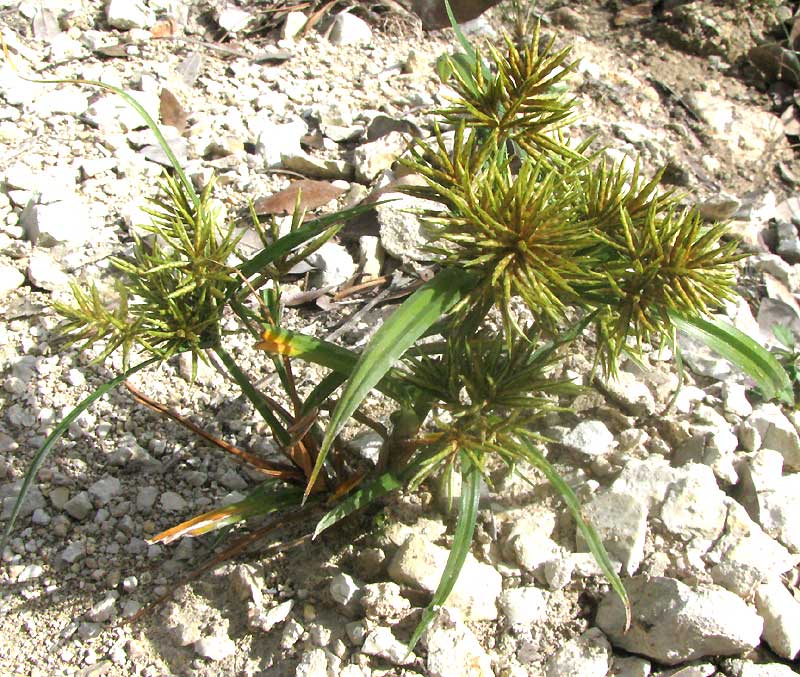
You meet a plant like the one at the right, and it has grassy leaves, but the flowers look weird for a grass. But some grasses are weird. Is it a grass or not? And what do you look for to decide?
In this case, our plant isn't a grass. It's Rusty Flatsedge, Cyperus odoratus, growing on a gravelly stream bed in southwestern Texas. Instead of it belonging to the Grass Family, it's a member of the Sedge Family.
GRASSES VS SEDGES
How is the Sedge Family, the Cyperaceae, different from the Grass Family, the Poaceae? The differences easiest to see are that grass stems are usually but not always round in cross section, while sedge stems are more or less triangular.
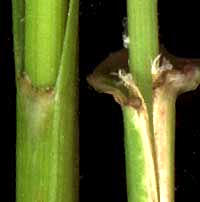
Also, in the picture at the left, with a sedge stem on the left and a grass stem on the right, you can see that the sheathes -- the leaves' lower parts encircling the stems -- are very different. The sedge sheath on the left is "closed," while the grass sheath on the right is split on the side opposite the blade.
Also in that picture you can vaguely see that the sedge stem on the left is more or less triangular, but the grass stem is definitely round. To get this sheath concept fixed in your mind, right now you could go outside, pull up a grass stem and notice how the blade forms a sheath when it meets the stems, that that sheath is split, and the stem is round.
THE SEDGE FAMILY
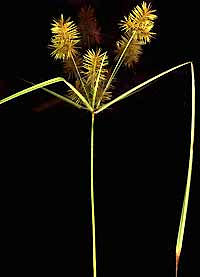
The Sedge Family, the Cyperaceae, is a big, commonly occurring one, embracing approximately 100 genera and about 5000 species. North America is home to about 843 species in 27 genera. Here are the best-known Sedge Family genera:
- the sedges themselves (genus Carex)
- the umbrella-sedges (genus Cyperus -- that's a typical one at the right)
- the spike-rushes (genus Eleocharis)
- bulrushes (genus Scirpus)
Differentiating the many, many species in each of these genera can be lots of fun.
SEDGES
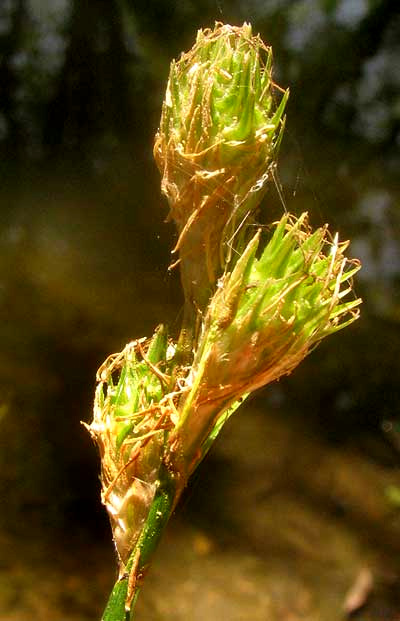
Sedges are species of the genus Carex, in the Sedge Family, or Cyperaceae. About 2000 sedge species are recognized worldwide, with about 480 listed for North America. The one at the right, Carex tetrastachya, grows along the banks of the little Leona River in southwestern Texas. In general, sedges prefer moist or wet habitats. In the arctic tundra they're among the dominant species.
The top of this sedge bears three flower-bearing spikes. Some sedge species bear only one or two spikes, while some have several more. In the spikes of this particular species, female flowers reside at the top, male at the bottom. In some species it's reversed. In other species the spikes are all male, or all female. "Variations on the sedge theme" go on and on like this.
Sedge fruits are of the achene type, meaning that they are small, dry, one-seeded, and the fruit doesn't split open to release the seed. A remarkable feature of sedge achenes is that they're enclosed within a scale with fused margins, the scale known by the special name of perigynium.
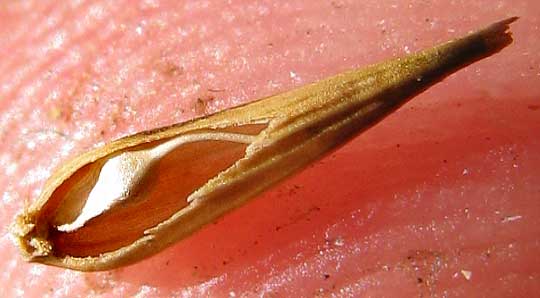
Sometimes the perigynium tightly wraps around the achene, other times it's like a balloon blown up around it. At the left, a hole has been opened into the side of a balloon-type perigynium from Carex vesicaria, revealing the achene inside it. Note that this achene is triangular in cross-section, and bears a long, slender neck extending toward the perigynium's top. Many sedge achenes are flattish, and a few are square in cross-section.
RUSHES OF THE RUSH FAMILY
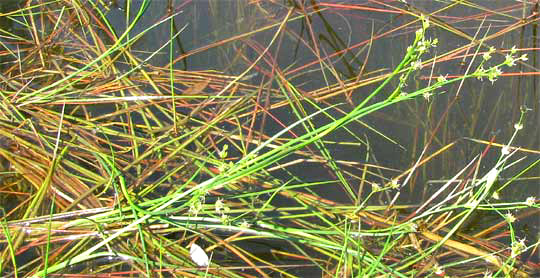
Rushes are members of the, genus Juncus, in the Rush Family, the Juncaceae. The species shown above is fairly typical. It's Juncus articulatus, growing on a pond's bank in Oregon's Siskyou Mountains, but found in similar environments throughout much of the world's cooler regions. About 300 rush species are known, with 95 listed for North America.
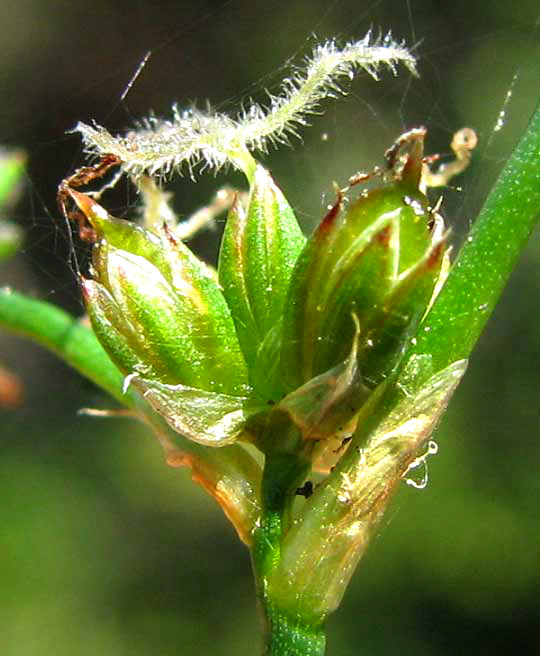
This species' flowers, shown at the right, are typical of the rushes. Each flower has a greenish, calyx-like lower part composed of tepals, which are basically petals and sepals with not enough difference between them to say which is which. In the picture, the center flower is topped by three fuzzy stigmas, which is where pollen grains land and germinate. The green ovaries are round in cross section, and mature into capsular-type fruits. Capsules are the most common fruit type. They are dry fruits which when mature split open to release seeds.
Besides members of the Sedge Family and rushes, other plant groups, such as certain genera in the Lily and Iris Families, sometimes at first glance can look like grasses. However, all of them, if you pay close attention, reveal important features that never would appear among true grasses.
The beginning of the fun with these plants is to notice those differences.